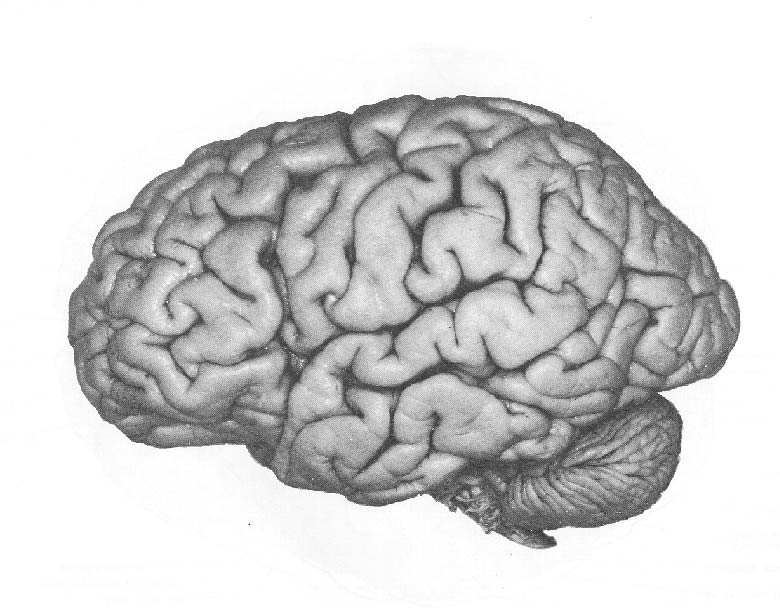


The Diencephalon is composed of two structures: the thalamus and the hypothalamus.
The thalamus is the large, two-lobed structure that constitutes the top of the brain stem. One lobe sits on each side of the third ventricle, and the two lobes are joined by the massa intermedia, which runs through the ventricle. Visible on the surface of the thalamus are white lamina (layers) that are composed of myelinated axons. The thalamus comprises many different pairs of nuclei, most of which project to the cortex. Some are sensory relay nuclei — nuclei that receive signals from sensory receptors, process them, and then transmit them to the appropriate areas of sensory cortex. For example, the lateral geniculate nuclei, the medial geniculate nuclei, and the ventral posterior nuclei are important relay stations in the visual, auditory, and somatosensory systems, respectively. The thalamus seems to be a relay for sensory input as well as an important part of other pathways, including motor and sensory pathways and those between different parts of the cortex and the cerebellum and other subcortical structures. The thalamus and the cortex are profusely interconnected by reciprocal connections, which play an important role in the generation of rhythmic patterns in the brain and in attention, and may also be involved in top-down effects in perception. By virtue of bidirectional connections between the thalamus and every region of the cortex, these rhythmic patterns sweep regularly and rapidly through the cortex. They, therefore, provide a possible source for the rapid pacemaker hypothesized for high-speed inner sequencing. The rate of speed of these thalamocortical rhythms ranges from twenty to eighty Hz (Hertz: cycles per second) in the waking state and as slow as from four Hz to less than one Hz in deep sleep.
The hypothalamus (Greek hypo-, cognate to Latin sub- "under") lies under the thalamus. It plays an important role in the regulation of several motivated behaviors. It exerts its effects in part by regulating the release of hormones from the pituitary gland, which dangles from it on the ventral surface of the brain. Two other structures appear on the inferior surface of the hypothalamus — the optic chiasm and the mammilary bodies. The optic chiasm is the point at which the optic nerves from each eye come together. The mammillary bodies are a pair of spherical hypothalamic nuclei located on the inferior surface of the hypothalamus, just behing the pituitary gland. The hypothalamus apparently does not play much of a role in language.
Go to Menu (for non-frame version.)
© 2000 Rice University. This document, or any portion hereof, may be used for non-commercial informational purposes only. Any copy of this document, or portion hereof, must include the copyright notice (http://www.rice.edu/about/cr-notice.html) in its entirety.